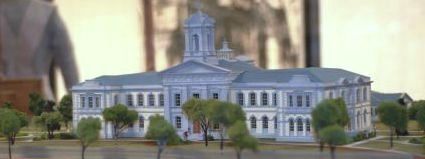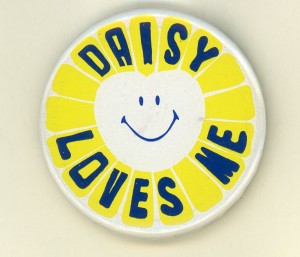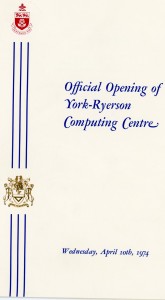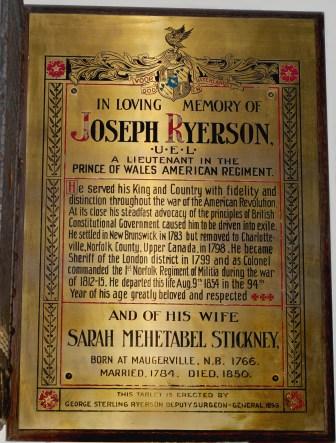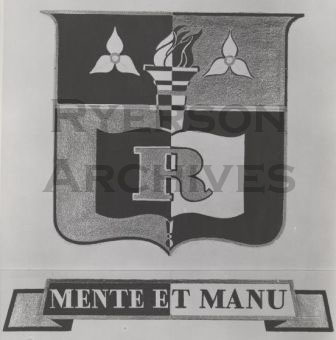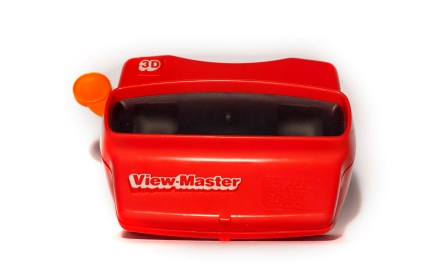
As mentioned in Part One of this feature (published February 19, 2013), the Normal School was a great stepping stone for the future of education in Canada. Egerton Ryerson set the standards with the first Normal School of Upper Canada, furthering the quality of education as well as increasing the number of pupils with a desire to receive formal training. In 1852 the Normal School at it’s new St. James Square location had its first semester with two hundred pupil teachers and a total student body of six hundred with the elementary students included.

From the moment the Normal School at St. James Square opened, it never stopped growing and transforming. Maintenance to the school’s infrastructure was frequent from the 1860s and on. Changes were also made to the east front of the building in 1882 to accommodate the Ontario School of Art and Design and an iron fence was added to the property ten years later. By 1896, a third storey was added to the South block of the Normal School which provided spacious halls with archways and allowed for its use as art and picture galleries. The new storey also allowed space for an auditorium.
The year 1941 marked the Normal and Model Schools buildings’ end as such and the government of Ontario offered the buildings for a federal-provincial war training centre – Dominion-Provincial War Emergency Training Program – in support of the Second World War. Also on site was the No. 6 Initial Training Centre of the Royal Canadian Air Force. Prefabricated buildings also were built.
The Normal and Model schools were relocated to the Earl Kitchener Public School in East York for the remainder of the war. Without discussion, the change was made and the Normal School was eventually renamed Toronto Teachers College.
After the war, the building was renamed yet again and it became the Toronto Training and Re-establishment Institute for people who had served in the war. The program ceased in 1948 and the institute became the Ryerson Institute of Technology with Howard Kerr as its founder. The building once known as the Normal School became Ryerson Hall in memory of Egerton Ryerson.

The now Ryerson Hall building served as the main building for the Ryerson Institute of Technology with the pre-fab outbuildings used as classrooms, social and athletic venues. However, by the late 1950s, it was decided that Ryerson Hall would be demolished to make room for an increasing student body and course offerings. Ryerson Hall could not accommodate the vast changes of the Institute.
It was hoped that St. James Square could be kept in tact but this proved to be impossible if the school was to move forward and expand. Between 1958 and 1963, the surrounding structures housed in St. James Square were demolished. These, along with the Normal School building, except its front door and surrounding façade, were replaced by the Kerr Hall quadrangle building.
In 1964, the school was renamed again, this time as Ryerson Polytechnical Institution, which eventually gave rise to what would become the Toronto Metropolitan University we know today.

The façade of the Normal School reminds us of our school’s journey from a normal and model school to a polytechnic institute to a university. It remains as a beautiful mark of architecture and is still in use as the entrance to the Toronto Metropolitan University Recreation and Athletics Centre. Nothing else stands from our past.
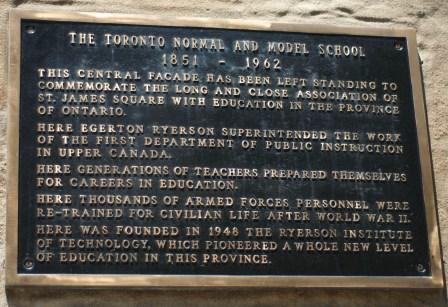
It is the door to our past and future.

For more information and images of the Normal School and its deconstruction with the construction of Kerr Hall, please visit the Ryerson Archives & Special Collections located on the fourth floor of the library.











